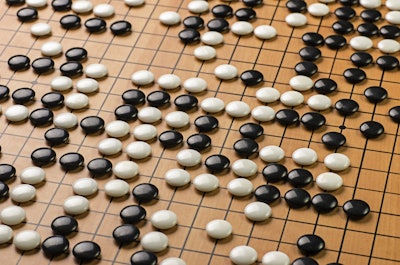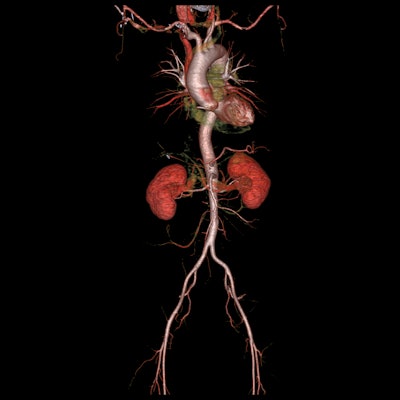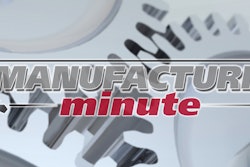
This week brought a plethora of news from the bleeding edge of research. Monkeys learned to drive wheelchairs with their thoughts, scientists used stem cells to regenerate the lens of the eye and restore vision, doctors found a way to do kidney transplants with kidneys from any donor and avoid organ rejection, and a Google AI system beat a human champion at Go, the most complex game ever invented.
Monkeys Drive Wheelchairs With Their Thoughts
 Top image and above: (A) The mobile robotic wheelchair, which seats a monkey, was moved from one of the three starting locations (dashed circles) to a grape dispenser. The wireless recording system records the spiking activities from the monkey’s head stage, and sends the activities to the wireless receiver to decode the wheelchair movement. (B) Schematic of the brain regions from which we recorded units tuned to either velocity or steering. Red dots correspond to units in M1, blue from PMd and green from the somatosensory cortex. (C) Three video frames show Monkey K drive toward the grape dispenser. The right panel shows the average driving trajectories (dark blue) from the three different starting locations (green circle) to the grape dispenser (red circle). The light blue ellipses are the standard deviation of the trajectories. (Images and description credits: Duke University via GE Reports)
Top image and above: (A) The mobile robotic wheelchair, which seats a monkey, was moved from one of the three starting locations (dashed circles) to a grape dispenser. The wireless recording system records the spiking activities from the monkey’s head stage, and sends the activities to the wireless receiver to decode the wheelchair movement. (B) Schematic of the brain regions from which we recorded units tuned to either velocity or steering. Red dots correspond to units in M1, blue from PMd and green from the somatosensory cortex. (C) Three video frames show Monkey K drive toward the grape dispenser. The right panel shows the average driving trajectories (dark blue) from the three different starting locations (green circle) to the grape dispenser (red circle). The light blue ellipses are the standard deviation of the trajectories. (Images and description credits: Duke University via GE Reports)Neuroscientists at Duke University have built a brain-machine interface (BMI) that allows monkeys to steer a robotic wheelchair with their thoughts. “The BMI uses signals from hundreds of neurons recorded simultaneously in two regions of the monkeys’ brains that are involved in movement and sensation,” according to the Kurzweil Accelerating Intelligence newsletter. “As the animals think about moving toward their goal — in this case, a bowl containing fresh grapes — computers translate their brain activity into real-time operation of the wheelchair.”
In a separate effort, scientists at GE Global Research are building tiny brain implants, which could one day improve the lives of people suffering from Alzheimer’s and Parkinson’s.
Stem Cells Restore Vision After Cataract Surgery by Regrowing Human Lenses
 After removing a cataract, scientists used stem cells to regrow the lens. (Image credit: Getty Images via GE Reports)
After removing a cataract, scientists used stem cells to regrow the lens. (Image credit: Getty Images via GE Reports)Working halfway around the world, scientists at the University of California, San Diego’s School of Medicine and Shiley Eye Institute, along with colleagues in China, have used stem cells to regenerate “functional” lenses and restore vision in infants after cataract surgery. “An ultimate goal of stem cell research is to turn on the regenerative potential of one’s own stem cells for tissue and organ repair and disease therapy,” said Kang Zhang, chief of ophthalmic genetics at the school.
How Origami Can Improve Surgery
A pair of engineering professors at Brigham Young University and their students used origami techniques to shrink surgical devices. The idea is to make incisions to accommodate the instruments that are so small they can heal on their own without stitches. “The whole concept is to make smaller and smaller incisions,” said professor Larry Howell. “To that end, we’re creating devices that can be inserted into a tiny incision and then deployed inside the body to carry out a specific surgical function.”
Google’s DeepMind AI System Beats Human Champion at Go
 Stones on a Go board. (Image credit: Getty Images via GE Reports)
Stones on a Go board. (Image credit: Getty Images via GE Reports)AlphaGo, an AI system built on Google’s DeepMind platform, won the first game of Go against one of the best human players of the game — often described as the most complex gave ever invented. “I’m in shock,” the player, Lee Se-dol, reportedly said at a press conference after the match. The winner of the best-of-five series will take home a $1 million prize.
New Process Allows Kidney Transplants From Any Donor
 This image of the kidneys was captured by GE’s Revolution CT scanner. (Image credit: GE Healthcare)
This image of the kidneys was captured by GE’s Revolution CT scanner. (Image credit: GE Healthcare)A study that involved 22 medical institutions and more than 1,000 patients has successfully tested a procedure that allows doctors to tweak a patient’s immune system and transplant kidneys from any donor. Called desensitization, the process first filters out antibodies from the patient’s blood to prevent rejection. When the body replenishes its own antibodies, they do not attack the new kidney. There are more than 100,000 patients in the U.S. waiting for a kidney transplant. The procedure could dramatically reduce the number of people on the waiting list. “Desensitization is still not for every transplant center,” senior author Dr. Dorry Segev, of Johns Hopkins University, told the Associated Press. But the findings show “you don’t need a compatible living donor to make a transplant happen today — you just need a living donor.” The results were published in the New England Journal of Medicine.






















